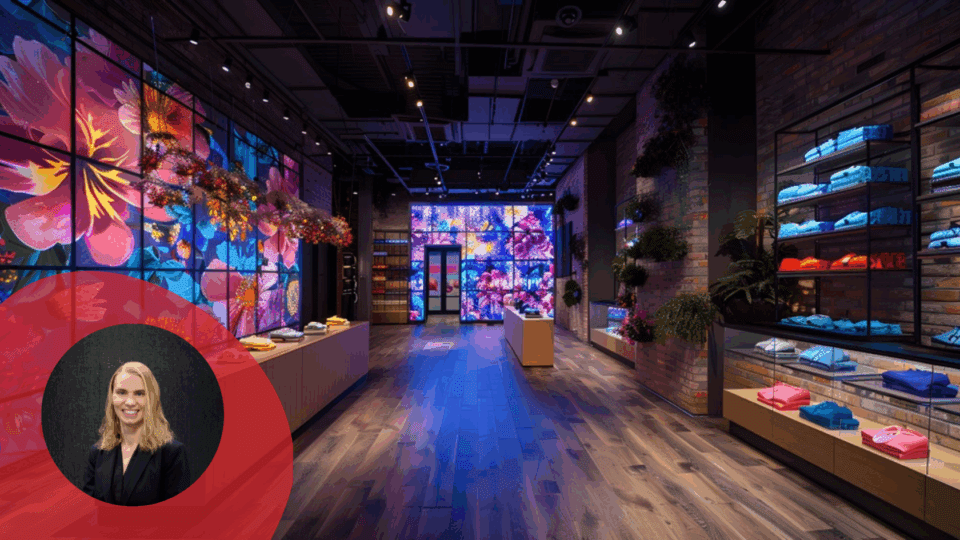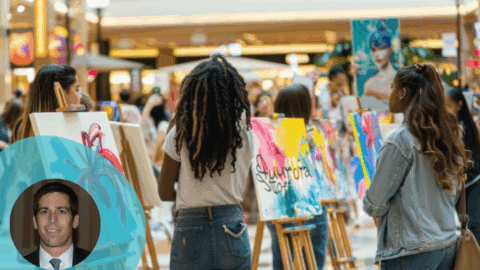After years of Marie Kondo-esque simplicity, the retail design era of “back-to-basics” aesthetics — defined by neutral palettes and sleek, pared-back interiors — is quickly falling out of favor amongst consumers demanding more vibrant and immersive spaces. Recognizing this shift, many brands are unveiling a new wave of retail environments rich in color, texture and character, bringing renewed purpose to the in-person shopping experience.
This return to maximalism is not just about design for design’s sake; it’s about creating authentic spaces that reflect the evolving expectations of consumers and forge deeper connections between brands and their audiences.
How Architects and Designers Can Help
As the retail landscape evolves, architects and designers are key to bringing these stories to life, creating spaces that are brand-driven, distinctive and unique. In order to appeal to consumers craving dynamic and expressive in-store experiences, this must go beyond overhead lighting and simple display fixtures; bold, creative storytelling and personality should be infused into every aspect of the store. But what does this look like?
Increased use of color.
Vibrant color palettes are an important layer to this shift in retail design. The thoughtful use of color in space strengthens the connection and cohesion between physical spaces and digital platforms, establishing an omnichannel brand ethos that speaks directly to shoppers. Whether through striking feature walls, dynamic displays or bold accents, color sets the mood, draws attention and deepens engagement. Accent walls in eye-catching hues or brightly colored displays immediately grab attention, reinforce the overarching sense of personality while helping to differentiate the storefront to passersby. Tonal changes also can be used to segment the store layout for intuitive wayfinding synced with the brand’s online presence.
Creating a third place within retail spaces.
Retailers in high-foot-traffic, walkable areas, especially those clustered with like-minded brands, can amplify the in-store experience by incorporating “third-place” elements — spaces that extend beyond traditional retail. By integrating inviting social spaces like lounge seating, coffee bars and cocktail/mocktail bars into a store’s design, retailers create an environment where customers are encouraged to linger, relax and socialize. This fosters a community atmosphere that goes beyond the transactional nature of shopping, allowing the brand to become a destination for connection, relaxation and engagement.
Rich textures and materials.
The integration of tactile elements is becoming a central component of the retail environment, as people are drawn to spaces that engage the senses beyond just sight, which ultimately is the appeal of in-person shopping over online. From plush fabrics to sleek metals, the interplay of different materials can convey luxury, creativity or even sustainability, depending on the company’s value proposition. Velvet upholstery, for example, sends a message of extravagance, while natural wood accents can help to communicate a more earthy, eco-conscious vibe. Rich textures also invite customers to not only look at the products but also touch and feel their quality or weight. Even small details, such as clothing hangers, are being carefully selected to evoke specific feelings, align with company values and add layers of meaning to the overall impression.
Creating unique experiences.
The shift toward maximalism in retail extends beyond just how spaces are designed to how they’re activated. Rewarding the conscious effort to shop in-person through limited edition collections, pop-ups and collaborations is an important and enticing draw for consumers. These offerings, promoted online but only accessible in-store, are intended to drive foot traffic and create a sense of exclusivity. Adding to this, the ability to personalize products in-store, like custom embroidery, allows customers to actively engage in the creative process, transforming a standard purchase into something truly unique.
The Shift in Action
While it may take time for these shifts to materialize due to design, leasing and construction cycles, the momentum is clear. Brands are reassessing their store prototypes, recognizing that what felt fresh and modern a few years ago now seems overly simplistic.
One of our confidential clients, for example, is reevaluating its storefront prototype design because the version from two years ago now feels too simple and monochrome. Another is exploring the use of color in a new way to create differentiation between locations and expand the depth of their brand statement.
The New Era of Expressive Retail Design
As the retail industry continues to recover and adapt, the move toward maximalism seems poised to reshape how retailers approach physical spaces. What once felt fresh and modern — monochromatic minimalism — now seems overly simplistic. From rich textures and vibrant color schemes to distinctive architectural features, architecture and design professionals play a critical role in crafting spaces that are not only functional but also tell a compelling, brand-driven story. As retailers seek to redefine themselves, the built environment becomes a powerful tool for shaping consumer perceptions and fostering deeper, more meaningful connections.
Christina Faley, Senior Associate, WELL AP, IIDA, is a Retail Studio Director at TPG Architecture, where she leads one of the firm’s two retail design groups. An Irish native with a background in hospitality, she joined TPG in 2016 after earning her Associate’s Degree in Interior Design from the Fashion Institute of Technology. Known for her conceptual creativity and technical precision, Faley has led high-profile projects for clients including El Palacio de Hierro and UPPAbaby. Her collaborative leadership style and empathy-driven approach foster meaningful client relationships and team success. Faley is passionate about designing holistic, hospitality-inspired brand environments that create experiences beyond the transactional.








